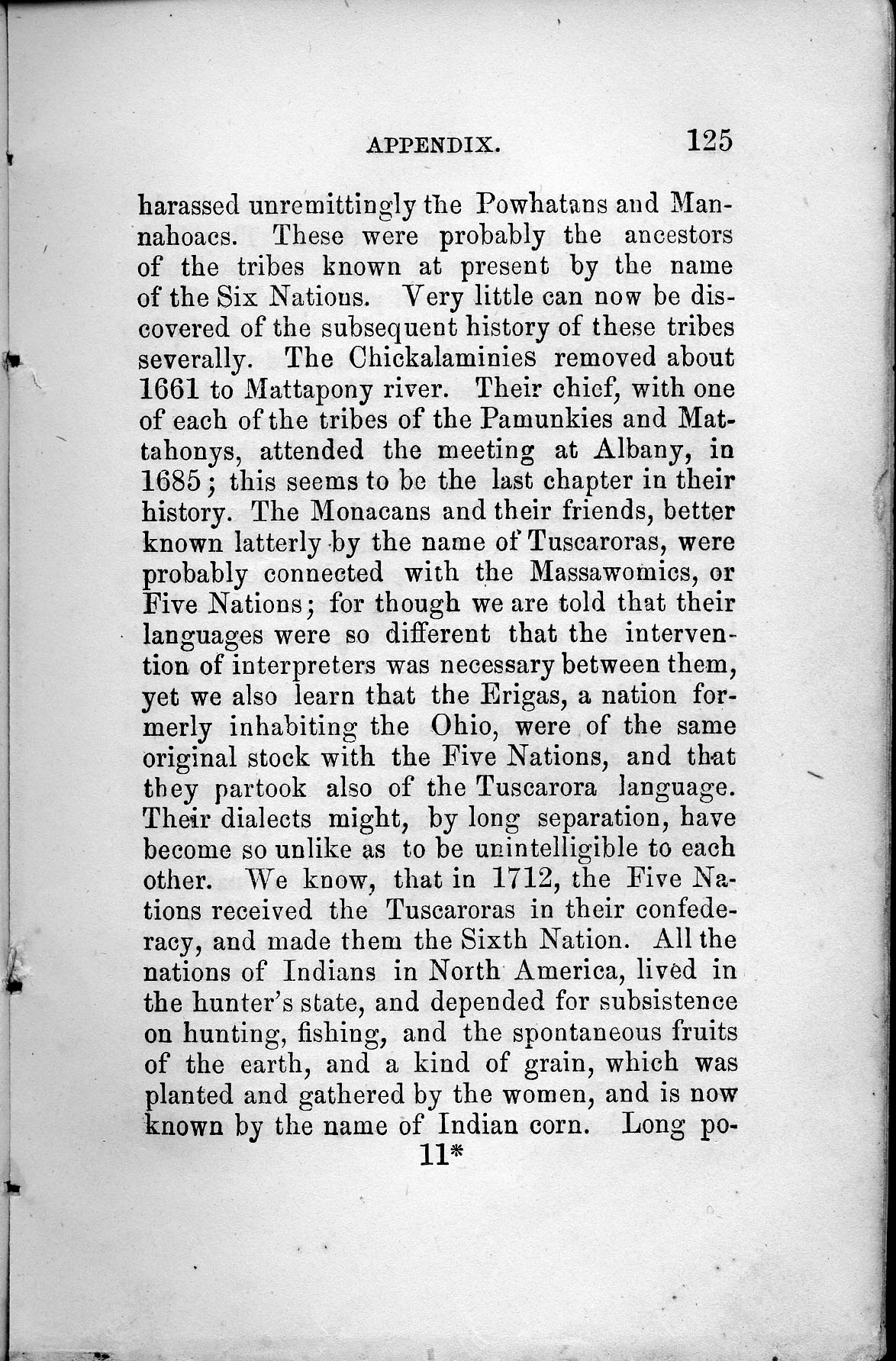harassed unremittingly the Powhatans
Organization Information
nahoacs
Organization Information
of the tribes known at present by the name
of the Six Nations
Organization Information
covered of the subsequent history of these tribes
severally. The Chickalaminies
Organization Information
1661 to Mattapony river. Their chief, with one
of each of the tribes of the Pamunkies
Organization Information
tahonys
Organization Information
Place Information
1685; this seems to be the last chapter in their
history. The Monacans
Organization Information
known latterly by the name of Tuscaroras
Organization Information
probably connected with the Massawomics
Organization Information
Five Nations
Organization Information
languages were so different that the interven-
tion of interpreters was necessary between them,
yet we also learn that the Erigas
Organization Information
merly inhabiting the Ohio
Place Information
original stock with the Five Nations
Organization Information
they partook also of the Tuscarora
Organization Information
Their dialects might, by long separation, have
become so unlike as to be unintelligible to each
other. We know, that in 1712, the Five Na-
tions
Organization Information
Organization Information
racy, and made them the Sixth Nation
Organization Information
nations of Indians in North America, lived in
the hunter's state, and depended for subsistence
on hunting, fishing, and the spontaneous fruits
of the earth, and a kind of grain, which was
planted and gathered by the women, and is now
known by the name of Indian corn. Long po-

